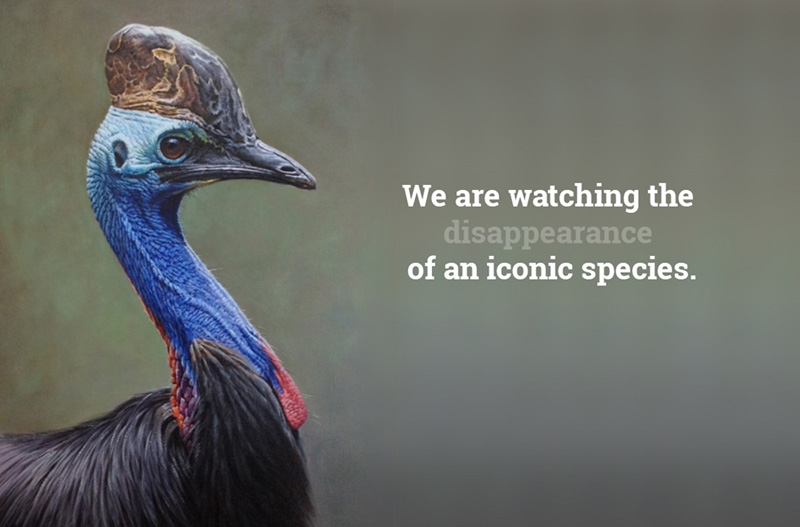
We have recently returned from a field trip to Far North Queensland. Although I had glimpsed wild cassowaries once before, they are shy and often hard to see in their dense rainforest home. So I enlisted the help of my partner Nicky, a rainforest ecologist with many years’ experience working with these amazing birds.
Most of the remaining birds are found in small islands of habitat adrift in a sea of housing estates and cleared farmland. Armed with binoculars, and surrounded by a cloud of DEET we ventured into one of the last places where you can expect to encounter these birds – Mission Beach south of Cairns. Many of these birds are old as few youngsters survive the daily hazards of speeding cars and wandering dogs to become parents themselves.
Early one morning we found a male and his very young striped chicks feeding quietly on some quondong fruits. One interesting observation I made is that the tail helps identify males from females. The undercarriage of female birds is straight across – they haven’t got the droopy tail that signifies a male. As poster-boys for female liberation, the males incubate the eggs (using their tail for covering) and rear the young while the females, the larger and grumpier of the 2 sexes, play the field. The chicks lose their stripes around 3 months and don’t breed themselves until they are at least 5 years old.
I was able to complete some field sketches (amid leech checks and calamus de-prickling) which are serving as the basis of my current work. Sadly this type of one-on-one experience with wild birds will soon become a distant memory, as Australia’s southern cassowary is endangered with fewer birds in the wild than there are giant pandas.
We are watching the disappearance of an iconic species.